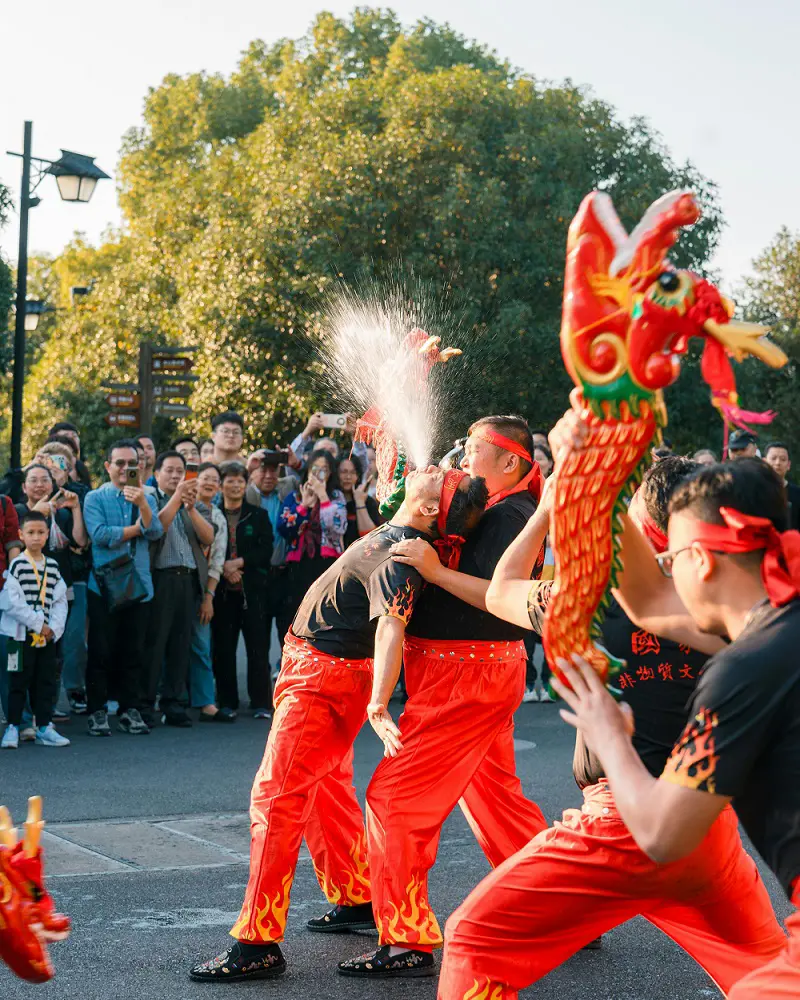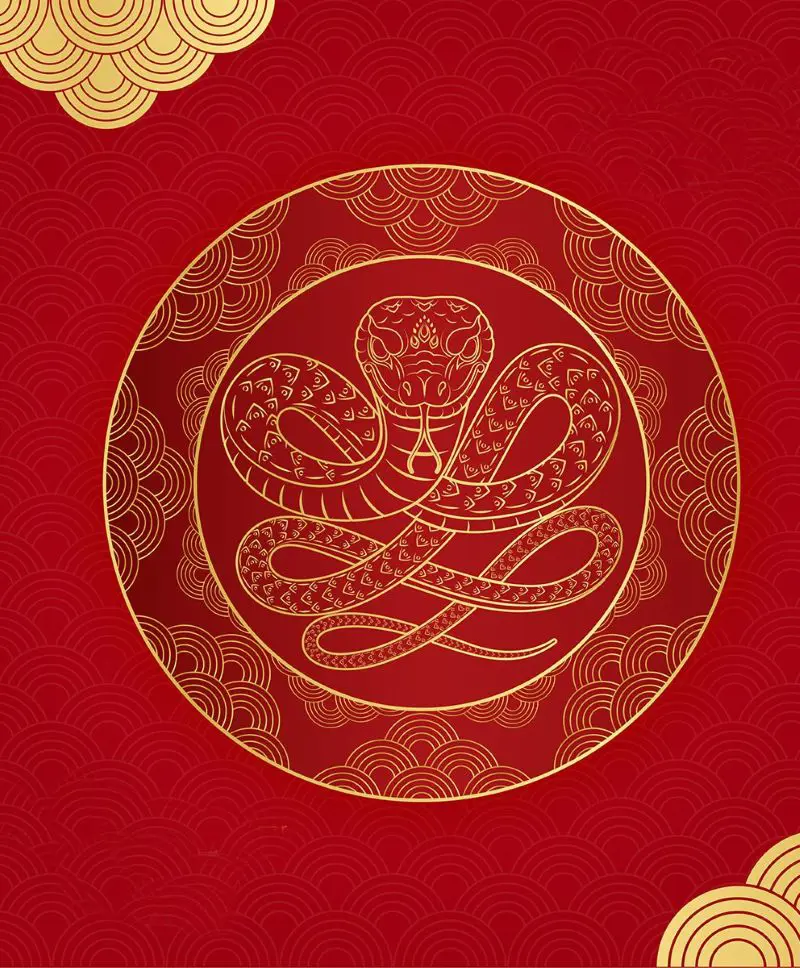Chakra Colors, Meaning & Function

Nowadays, the concept of chakras has gained popularity worldwide and many people are following it as well. But, do you know about its origin? This concept is crafted from ancient Indian traditions and is usually practiced in yoga and meditation. To your knowledge, chakras are vital energy centers in our bodies that influence our physical, emotional, and spiritual well-being.
Likewise, there are seven chakras, each associated with different colors which symbolize various aspects of our lives. To understand all those symbolizations and aspects we have curated this blog. So, let's dig in and understand how they can impact your overall health, balance, and lifestyle.
What Are Chakras?
The term "chakra" comes from the Sanskrit word meaning "wheel" or "disk." Like its name, chakras are often described as spinning wheels of energy that align along the spine, from the base to the crown of the head. Each chakra corresponds to different physical, emotional, and spiritual aspects of our being.
When these energy centers are balanced and aligned, we feel at peace. But, when they are blocked or out of sync, we can face physical and emotional health problems.
The Seven Chakras
Now, it's time for seven chakras. The seven chakras are linked to a different color associated with their vibration which we will discuss in detail below. For now, let's have a short overview of chakra frequency:
- Root Chakra: 396 Hz
- Sacral: 417 Hz
- Solar Plexus: 538 Hz
- Heart: 639 Hz
- Throat: 741 Hz
- Third Eye: 852 Hz
- Crown: 936 Hz
Frequencies associated with each of the seven chakras are part of a holistic approach to energy healing and balance. Each chakra corresponds to a specific frequency which we have mentioned above, those frequencies can aid in aligning and harmonizing the body's energy centers.
1. Root Chakra (Muladhara)
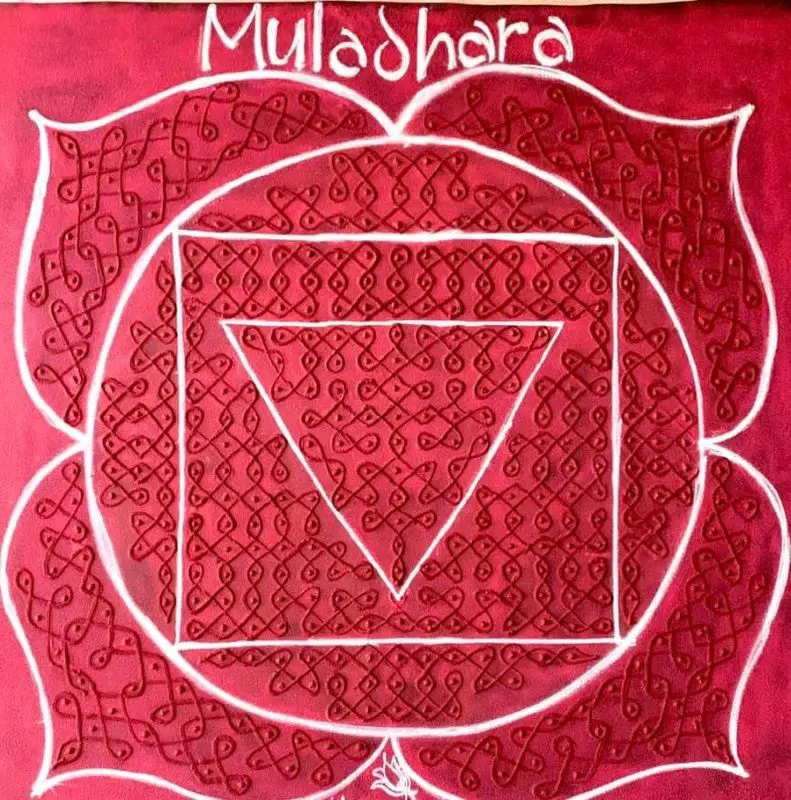
The root chakra is the foundation of your being, as it represents our survival instincts, security, and sense of belonging. It is associated with feelings of stability and grounding.
Color: Red
Location: Base of the Spine near your tailbone
Chakra stones: Jasper, Garnet, Hematite, Obsidian
Element: Earth
Functions
- It provides a sense of security, stability, and grounding
- Regulate the body's basic functions and eliminate waste
- Connect us to the earth and our physical environment
- Support our survival needs such as food, water, and shelter
- Give us a sense of belonging and acceptance
Signs of Imbalance
An imbalanced Root Chakra can manifest in various ways affecting your well-being. Here are some common signs to look out for:
- Feeling insecure or anxious
- Financial instability
- Fearfulness
- Feeling disconnected from reality
How to Balance
- You can practice grounding exercises like walking barefoot on the earth or visualizing roots growing from your feet
- Engage in physical activities like gardening, hiking, or yoga to connect with the earth element
- Eat root vegetables, red fruits, and protein-rich foods to nourish the root chakra
- Use essential oils like patchouli, cedarwoods, or vetiver for their grounding properties
- Practice affirmations like "I am safe and secure" or "I am grounded and stable"
- Spend time in nature, such as forests or mountains, to feel a deeper connection to the earth
- Use sound frequencies associated with the Root Chakra, such as chanting the seed mantra "LAM" or listening to music tuned to the frequency of the Root Chakra (396Hz)
2. Sacral Chakra (Svadhisthana)
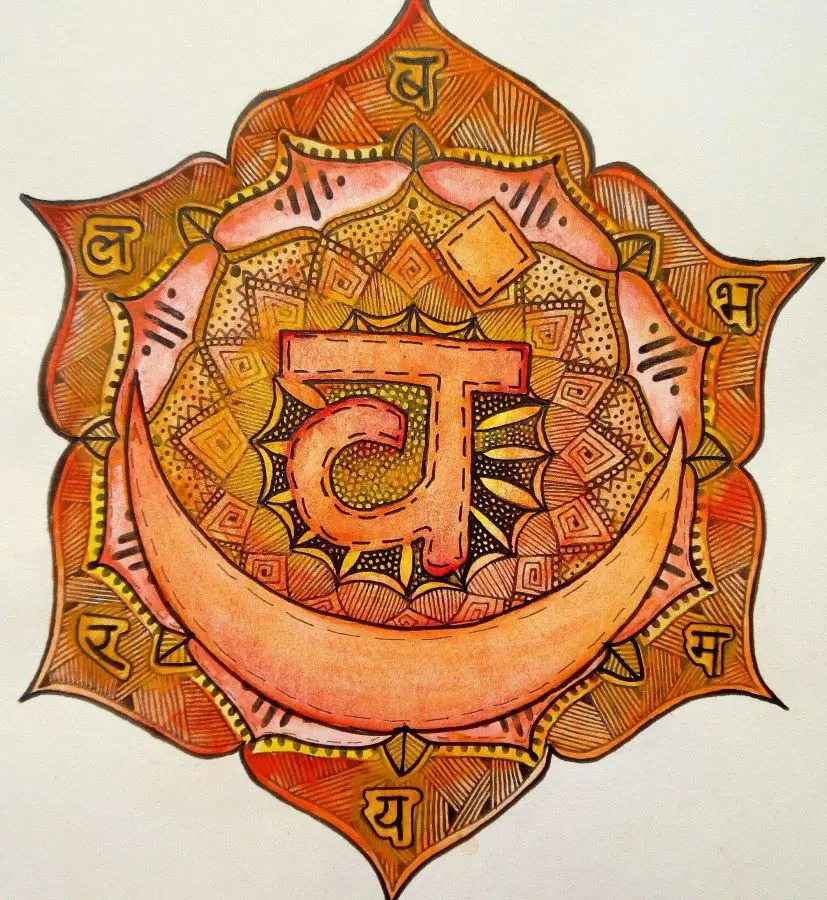
The sacral chakra governs our creativity, sexuality, and emotional well-being. It is linked to pleasure and enjoyment in life. A balanced sacral chakra allows for healthy relationships and the ability to embrace change.
Color: Orange
Location: Lower abdomen, just above the pubic bone
Chakra stones: Citrine, Carnelian, Amber, Orange Calcite
Element: Water
Functions
- The sacral chakra is the hub for emotions and feelings, influencing how we experience joy, pleasure, and intimacy
- It plays a crucial role in sexuality, encompassing both the expression of sexual needs and the ability to experience sexual pleasure.
- This chakra is associated with creative energy, facilitating artistic expression and innovation
- It governs how we connect with others and this impacts our ability to form healthy relationships and maintain emotional intimacy
- It is linked to the health of the reproductive organs, bladder, and kidney, influencing physical vitality and overall well-being
- The term "Svadhishthana" translates to "dwelling place of the self," which highlights its role in self-exploration and understanding personal desires and boundaries
Signs of Imbalance
- Lack of creativity
- Emotional instability
- Sexual dysfunction
- Feelings of guilt or shame
How to Balance
- Focus on the Beej mantra "Vam" or visualize the color orange to enhance energy flow.
- As discussed in the previous chakra, use positive affirmations such as "I am a creative being" to foster a positive mindset.
- Engage in creative pursuits like painting, writing, or cooking to stimulate the chakra.
- Practice fluid yoga poses that emphasize hip movement and pelvic openness to release energy.
- Spend time near water bodies or take baths to enhance the flow of emotions and creativity.
- Utilize scents like jasmine or orange to promote feelings of pleasure and creativity.
- Include foods associated with fertility and creativity, like seeds, and eggs, and fruits like pomegranates and figs.
3. Solar Plexus Chakra (Manipura)
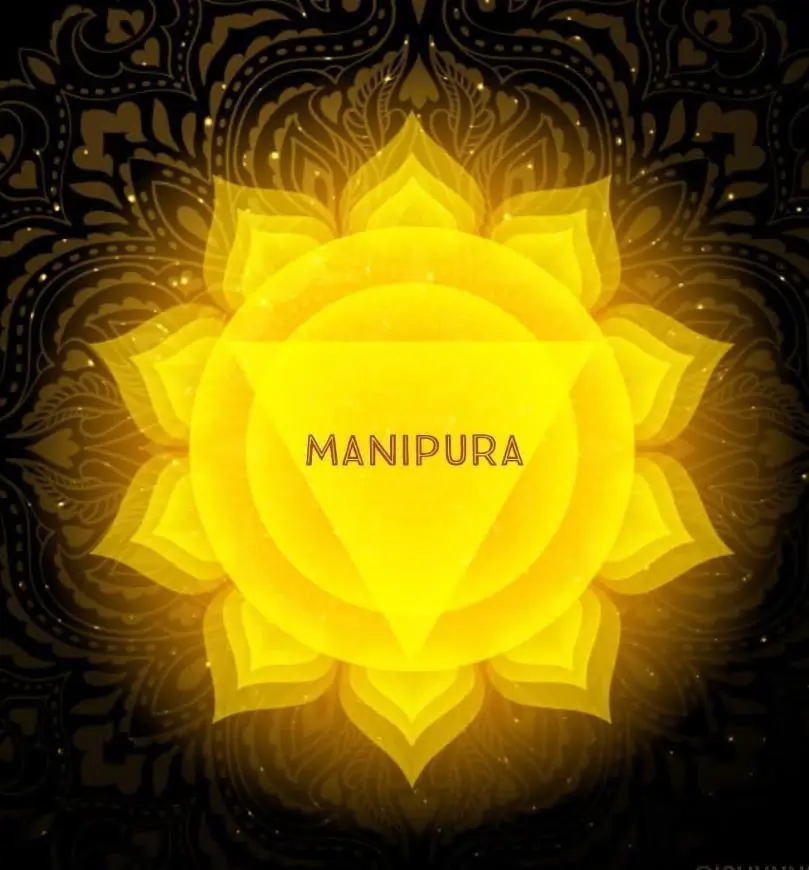
The Solar Plexus Chakra, known in Sanskrit as the Manipura Chakra, is a vital energy center that embodies personal power, confidence, and self-esteem. It plays a crucial role in our sense of identity and willpower. In addition, it is also known as the yellow chakra because of its color. Now, as we discussed the yellow chakra color meaning, let's find out other info.
Color: Yellow
Location: Upper Abdomen (approximately four fingerbreadths above the navel)
Chakra stones: Pyrite, Topaz, Tourmaline, Yellow Jasper
Element: Fire
Functions
- Governing personal power, self-esteem, and confidence
- Regulating digestion and metabolic processes
- Influencing willpower, motivation, and ambition
- Connecting us to our personal identity and sense of purpose
- Supporting emotional balance and the ability to assert oneself
Signs of Imbalance
- Low self-esteem
- Difficulty making decisions
- Anger or frustration
- Lack of motivation
Balancing Techniques
- Engage in yoga poses that stimulate the Solar Plexus Chakra, such as Boat Pose (Navasana) or Warrior III (Virabhadrasana III)
- Practicing breathing exercises (pranayama) to enhance energy flow and vitality
- Use visualization techniques, imagining a bright yellow sun radiating from your solar plexus
- Incorporate yellow foods into your diet, such as bananas, corn, and yellow peppers, to nourish this chakra
- Utilize essential oils like lemon, ginger, or peppermint for their energizing properties
- Practice affirmations such as "I am confident and strong" or "I embrace my personal power"
- Spend time in sunlight or engage in activities that boost your confidence and self-expression
4. Heart Chakra (Anahata)
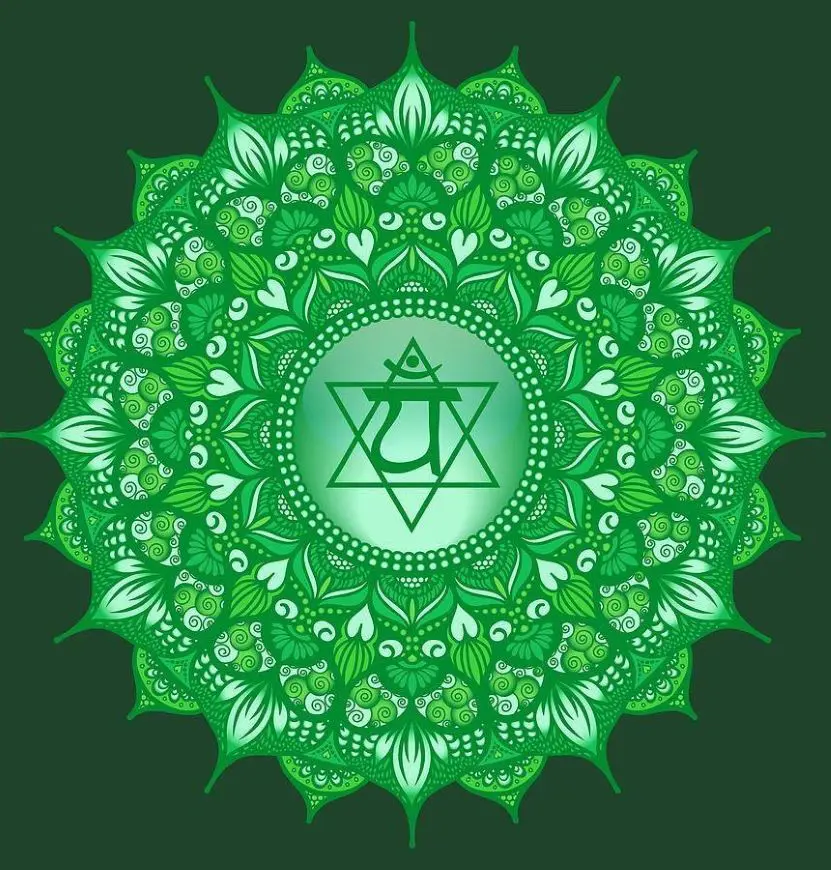
The Heart Chakra is the bridge between the lower and upper chakras. It governs your ability to love and be loved. Balancing this chakra makes you feel compassionate, empathetic, and connected to others. Now, let's talk about what color is heart chakra and other additional information.
Color: Green
Location: Center of chest
Chakra Stones: Rose quartz, Emerald, Amazonite
Element: Air
Functions
- Regulating the heart, lungs, and circulatory system
- Fostering love, compassion, and empathy
- Enabling us to give and receive love unconditionally
- Promoting a sense of connection and belonging
- Balancing the emotional body and facilitating self-love
Signs of Imbalance
- Difficulty in relationships
- Lack of empathy or compassion
- Holding grudges
- Feelings of loneliness
How to Balance
- Practice heart-opening yoga poses like Camel (Utrasan) and Upward-Facing Dog (Urdhva Mukha Svanasana)
- Engage in heart-centered meditations, visualizing a green or pink light radiating from your heart center
- Use affirmations like "I am worthy of love" or "I am open to giving and receiving love"
- Incorporate heart-nourishing foods like leafy greens, avocados, and dark chocolate into your diet
- Utilize essential oils like rose, jasmine, or ylang-ylang to promote feelings of love and connection
- Spend time in nature which can help open and balance heart chakra
- Practice acts of kindness and compassion towards yourself and others
- Chant the mantra "YAM", which resonates with the vibration of the heart chakra
5. Throat Chakra (Vishuddha)
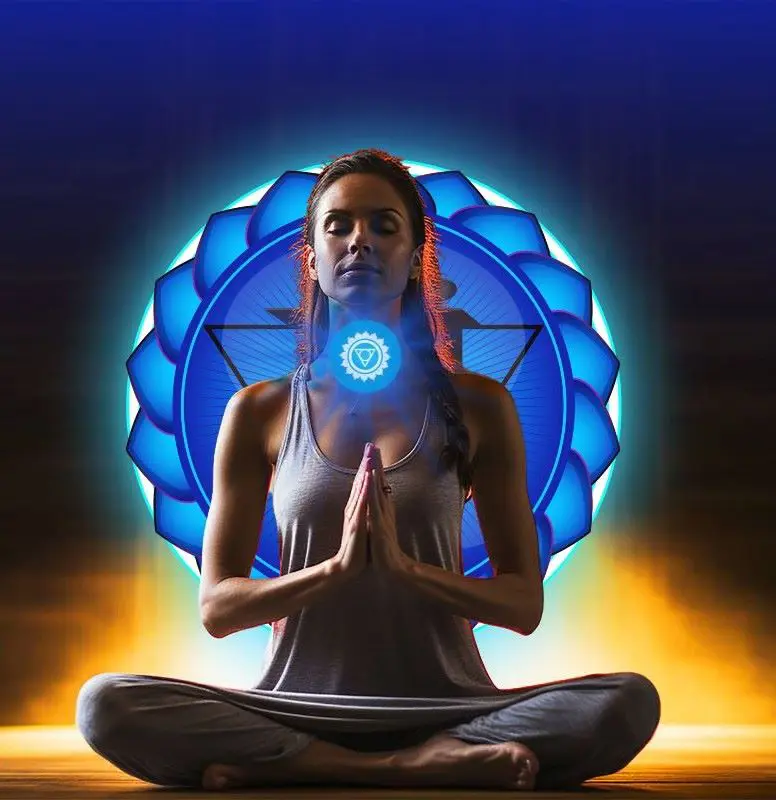
The Throat Chakra is your center of communication and self-expression. It governs your ability to speak your truth and express yourself authentically. If you can balance it, you can communicate clearly and confidently.
Color: Blue
Location: Base of the throat to the center of the eyes
Chakra stones: Aquamarine, Blue-lace agate, Lapis Lazuli
Element: Ether
Functions
- Controlling the throat, mouth tongue, and neck
- Facilitating clear and honest communication
- Enabling us to express our creativity and individuality
- Promoting a sense of self-expression and authenticity
- Balancing the mental body and facilitating self-expression
Signs of Imbalance
- Excessive talking or gossiping (Overactive Throat Chakra)
- Difficulty listening to others (Overactive)
- Tendency to be overly critical or judgemental (Overactive)
- Difficulty expressing oneself clearly (Underactive Throat Chakra)
- Feelings of shyness or introversion (Underactive)
- Difficulty making decisions or standing up for oneself (Underactive)
Balancing Techniques
- Practice yoga poses that open the throat and neck, such as Camel (Ustrasana) and Fish (Matsyasana)
- Engage in chanting, singing, or humming to stimulate the vibration of the throat chakra
- Incorporate blue and purple foods into your diet, such as blueberries, plums, and purple cabbage, to nourish this chakra
- Utilize essential oils like peppermint, eucalyptus, or spearmint to promote clear communication and self-expression
- Chant the mantra "HAM," which resonates with the vibration of the throat chakra
6. Third Eye Chakra (Ajna)
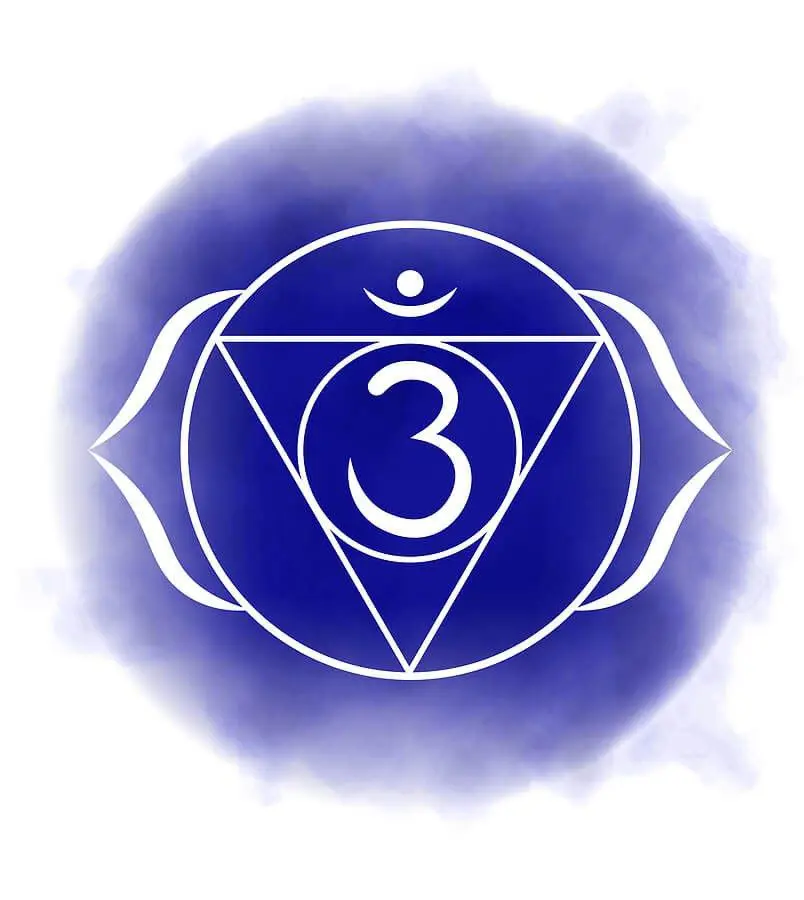
The Third Eye Chakra is your center of intuition and insight. It rules your ability to see the bigger picture and access inner wisdom. When balanced, you trust your intuition and have a strong sense of clarity.
Color: Indigo
Location: Between the eyebrows
Chakra Stones: Blue tiger's eye, Amethyst, Sodalite
Element: Light
Functions
- Facilitating intuition and inner wisdom
- Enhancing perceptions and clarity of thought
- Connecting us to higher consciousness and spiritual insight
- Allowing for self-realization and understanding of one's true nature
- Enabling us to transcend illusions and see the bigger picture of life
Signs of Imbalance
- Experiencing excessive daydreaming or fantasy (Overactive Third Eye Chakra)
- Difficulty in distinguishing between reality and imagination (Overactive)
- Overthinking or being overly analytical (Overactive)
- Lack of intuition or difficulty trusting one's instincts (Underactive)
- Poor concentration or mental clarity (Underactive)
- Feeling disconnected from one's inner self or purpose (Underactive)
How to Balance
- Practice meditation focusing on the space between the eyebrows, visualizing indigo expanding and illuminating your mind
- Engage in yoga poses that stimulate the third eye, such as Child's Pose (Balasana) and Dolphin Pose
- Use affirmations like "I trust my intuition"
- Incorporate indigo foods into your diet, such as blueberries and eggplant, to nourish this chakra
- Chant the mantra 'OM," which resonates with the vibration of the third eye chakra and promotes spiritual awareness
- Practice the Hakini Mudra, a hand gesture that helps focus the mind and enhance concentration during meditation
7. Crown Chakra (Sahasrara)
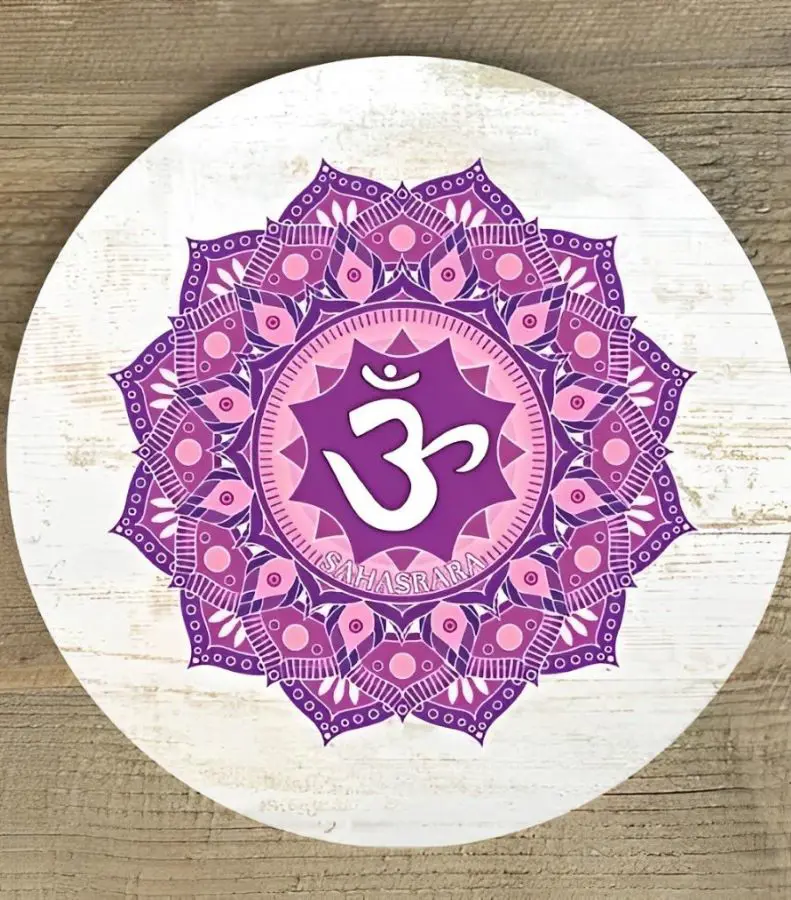
The Crown Chakra is the highest chakra and represents your connection to the divine or the higher consciousness. It controls your spiritual awareness and sense of purpose. When balanced, you feel connected to the universe and at peace with yourself.
Color: Violet
Location: Two inches above the top of the head
Chakra stones: Amethyst, Clear Quartz, Moonstone, Selenite
Element: Thought
Functions
- Connecting us to higher consciousness and the divine
- Facilitating spiritual awakening and enlightenment
- Enabling a sense of unity with the universe and all living beings
- Promoting self-knowledge and wisdom
- Allowing for transcendence beyond the material world
Signs of Imbalance
- Hyper-spiritualization or detachment from reality (Overactive Crown Chakra)
- Difficulty focusing on practical matters (Overactive)
- Feeling disconnected from the physical body (Overactive)
- Lack of spiritual awareness or connection (Underactive Crown Chakra)
- Feelings of isolation or disconnection from others (Underactive)
- Difficulty finding purpose or meaning in life (Underactive)
- Close-mindedness or rigidity in beliefs (Underactive)
How to Balance
- Engaging in meditation focused on the crown area can enhance spiritual connection. Techniques may include visualizing light at the top of the head and repeating affirmations related to unity and spiritual connection.
- Spending time outdoors and being mindful of the environment can help ground and balance the energies of the crown chakra.
- Specific yoga poses, such as headstands and forward bends can stimulate the crown chakra and promote energy flow.
- Practicing mindfulness helps in recognizing and letting go of limiting beliefs and thoughts, facilitating a deeper connection to the present moment and the universe.



